Market Pulse: Are Bitcoin Long-Term Holders Spending Their Coins?
As the market rallies from the recent lows, we inspect whether Bitcoin Long-Term Holders are taking the opportunity to exit positions at or above their aggregate cost basis.

Despite all the uncertainties in the macro landscape, cryptocurrency markets have experienced a meaningful recovery since mid-July. Bitcoin prices have reclaimed two psychologically significant levels, including the 200 WMA, Long-Term Holders’ Cost Basis (LTH-Cost Basis), and Market Averaged Cost Basis (Realized Price), briefly touching the ~24k level.
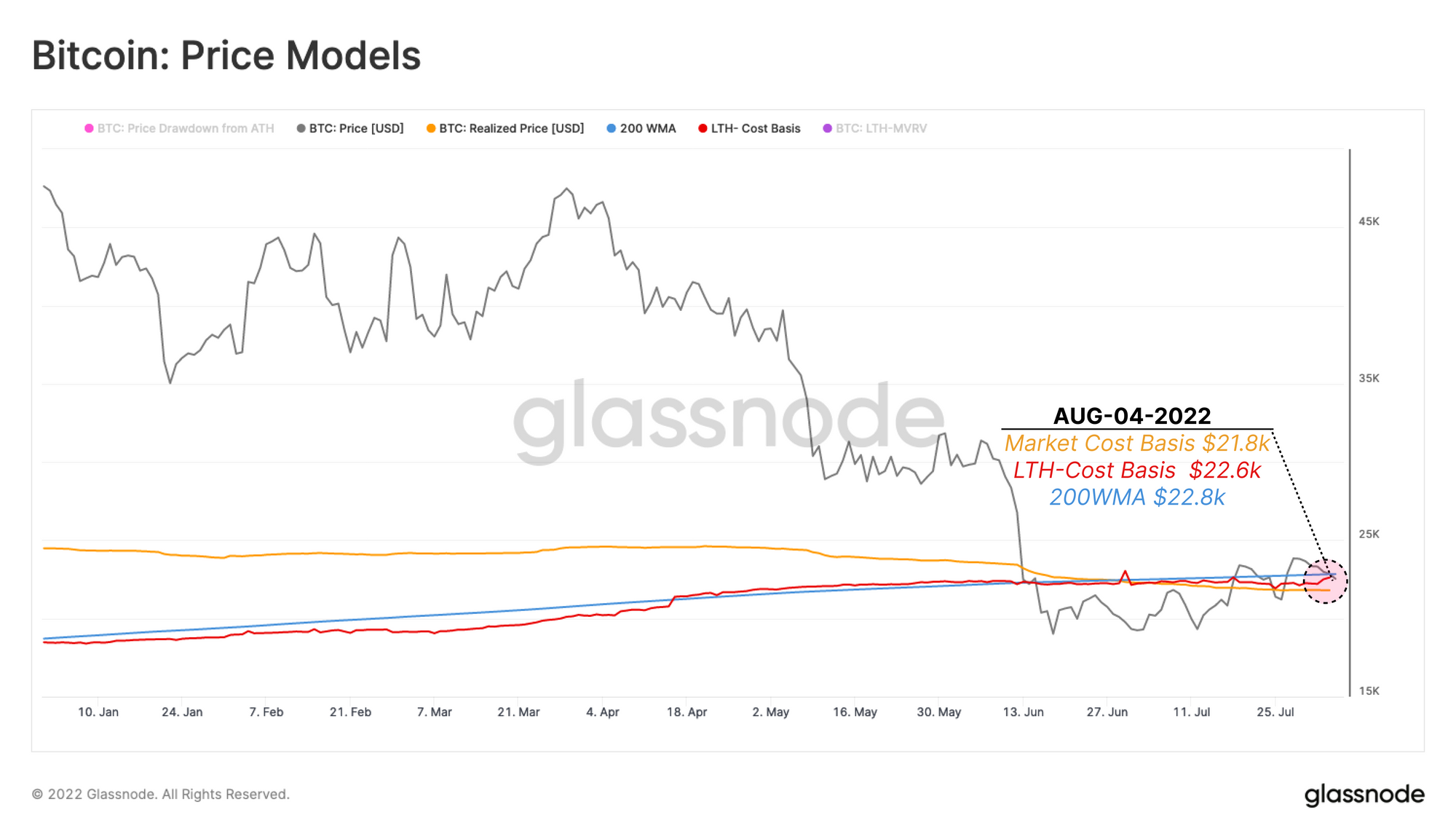
Such an impulsive rally during a bear market leads many to question the sustainability of the ongoing positive momentum. This Market Pulse report aims to trace the behaviour of stakeholders with an emphasis on Long-Term Holders with ~13.337 M (79.85%) of circulating supply in their possession.
Since the start of May, the Long-Term Holder cohort has on net distributed around 222k BTC, which is equivalent to approximately 1.6% of their all-time-high holdings.
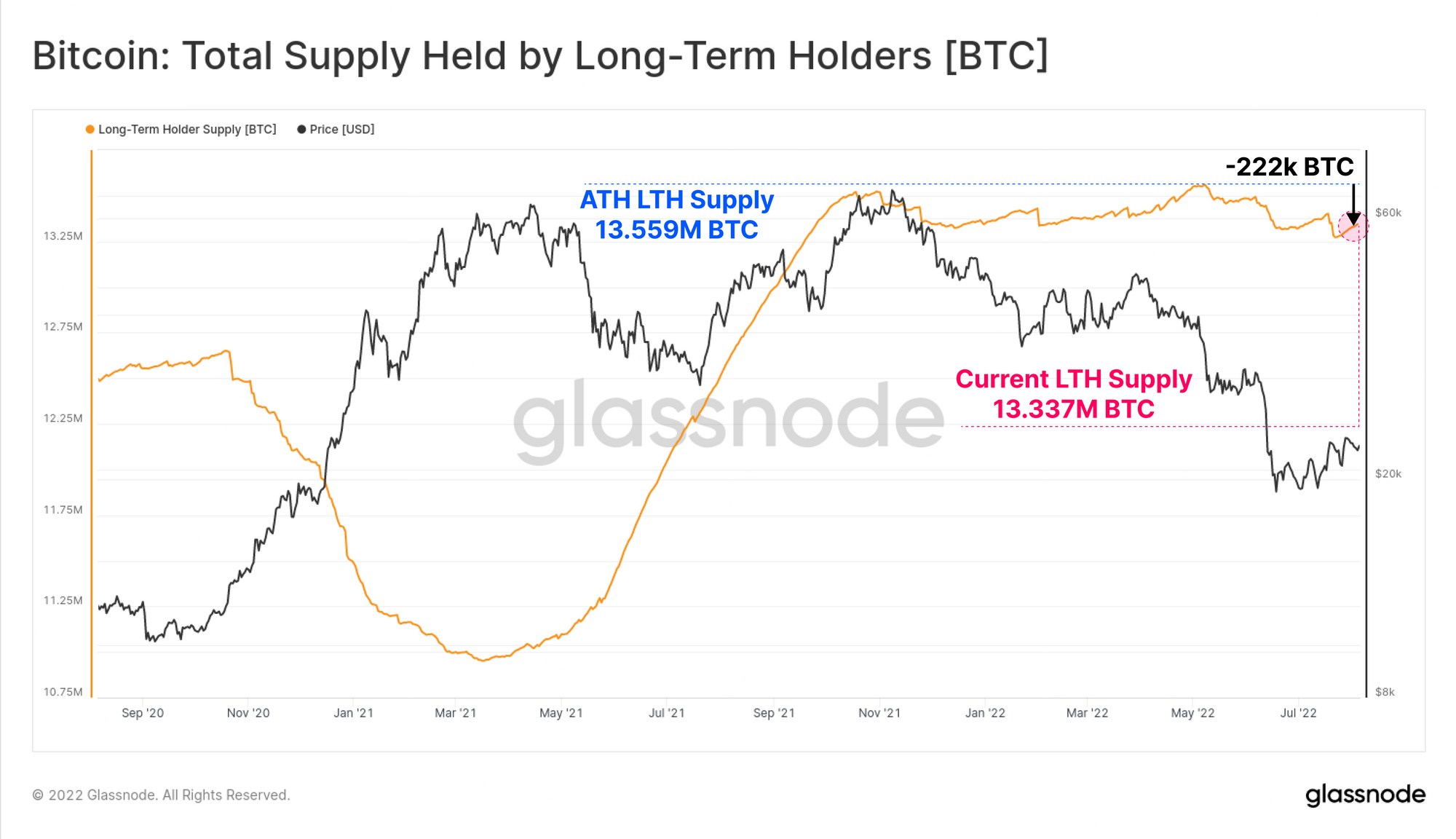
The Long-Term holders’ behaviour throughout the recent rally can be inspected from two dimensions: Unrealized Stress (profitability of their holdings), and Realized Stress (profitability of their spent coins).
Unrealized Stress on LTH held Supply (LTH-MVRV)
Here, we compare the current spot price with the average acquisition price for Long-Term Holders. Looking back on the last 21 days, the implied stress on Long-Term Holders has diminished as price reclaimed the LTH-Cost Basis (LTH-MVRV>1).
The LTH-Cost Basis is currently trading at $22.6k, which indicates this cohort is currently holding coins at a 1% loss, considering the market price of $22.3k at the time of writing.
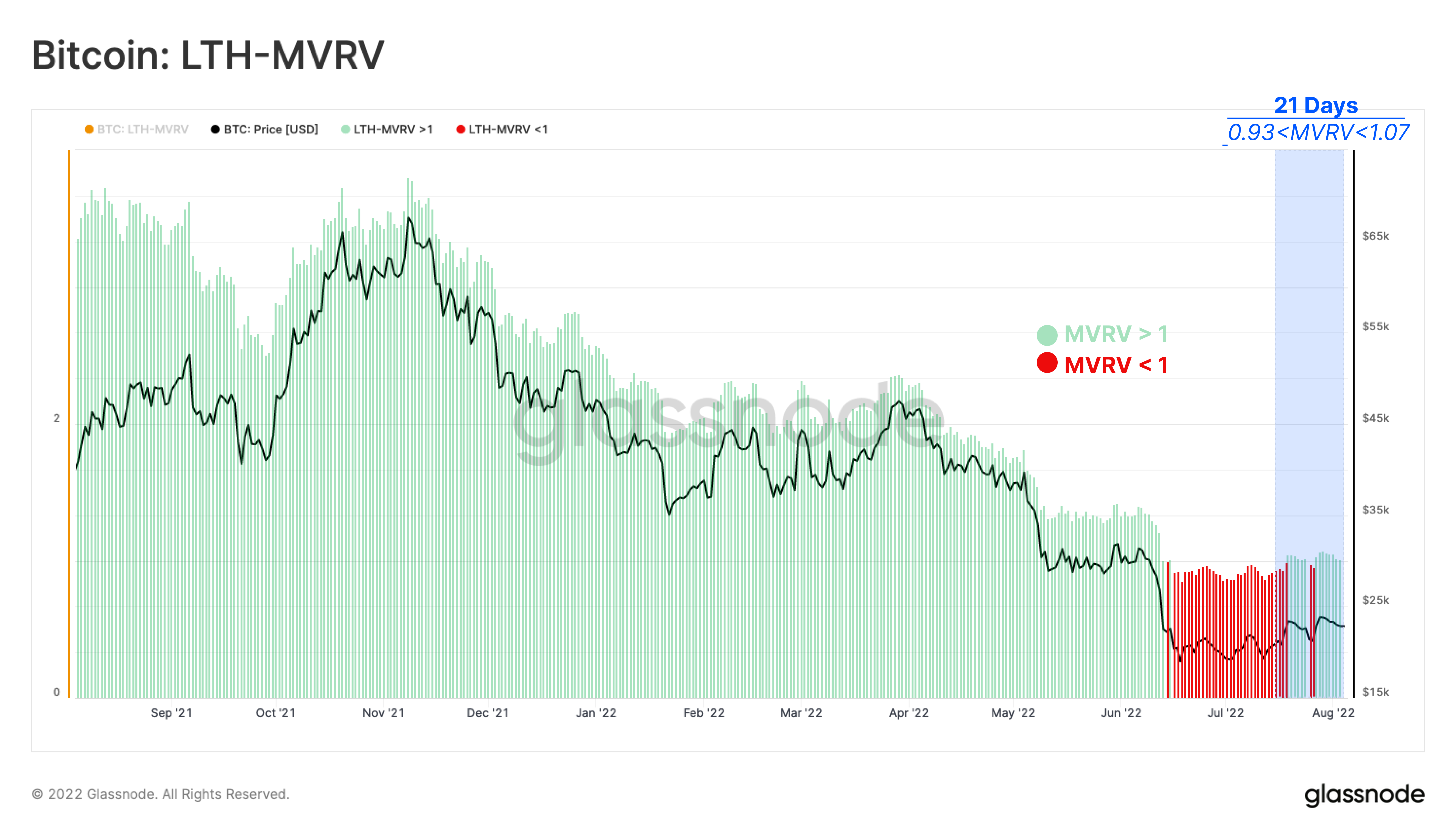
Realized stress on LTH Spent Supply (LTH-SOPR):
LTH-SOPR measures the ratio between the Long-Term Holder disposal price, and the average acquisition price.
Since mid-July, the weekly average of LTH-SOPR shows that Long-Term Holders were spending their coins at loss. With prices finding recent resistance at the $24k level, the weekly averaged value of LTH-SOPR is now at 0.67, indicating a 33% loss locked in on average. This confirms the continuation of spending at loss by Long-Term Holders in the current market.
Despite the spot prices being ~7% above the Long-Term Holder’s Cost Basis ($22.6k) most of the last 21 days, the weekly average value of LTH-SOPR (7DMA) implies that Long-Term Holders realized losses on spent coins ranging from -11% to -61%. This denotes Long-Term Holders who acquired coins at the 2021-2022 market tops are the primary spenders throughout this rally, and those who still hold coins from the 2017-2021 cycle (or earlier) are largely sitting tight.
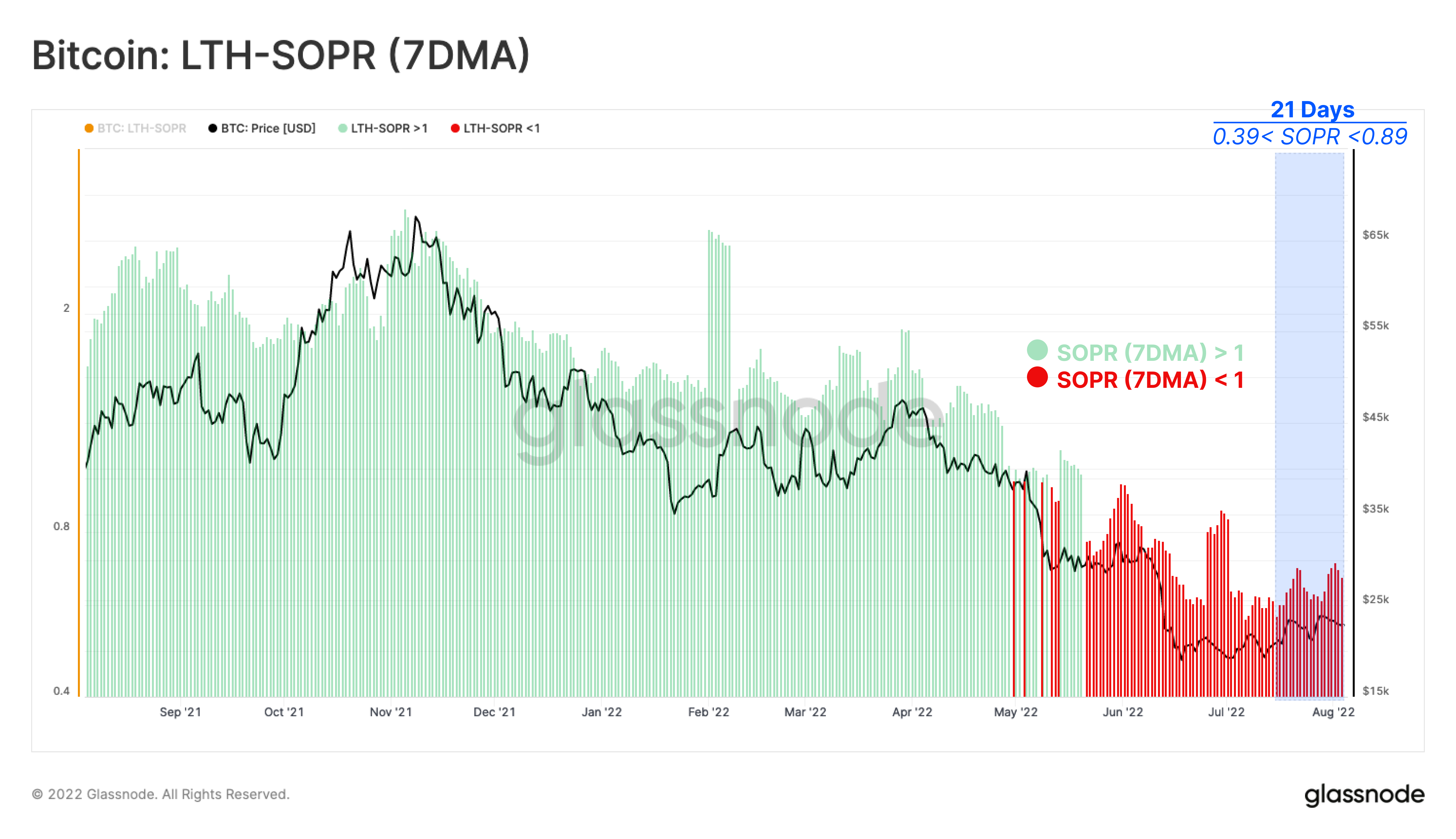
In response, over the last three weeks, the aggregated behaviour of Long-Term Holders has changed from accumulating at a rate of 79k BTC/month, to distributing up to -47k BTC/month. Remarkably, this cohort seized the opportunity of rallying prices and spent 41k BTC, or 0.3% of their supply, over the last 21 days. (Note that net spending is defined as Accumulation plus HODLing minus Distribution).
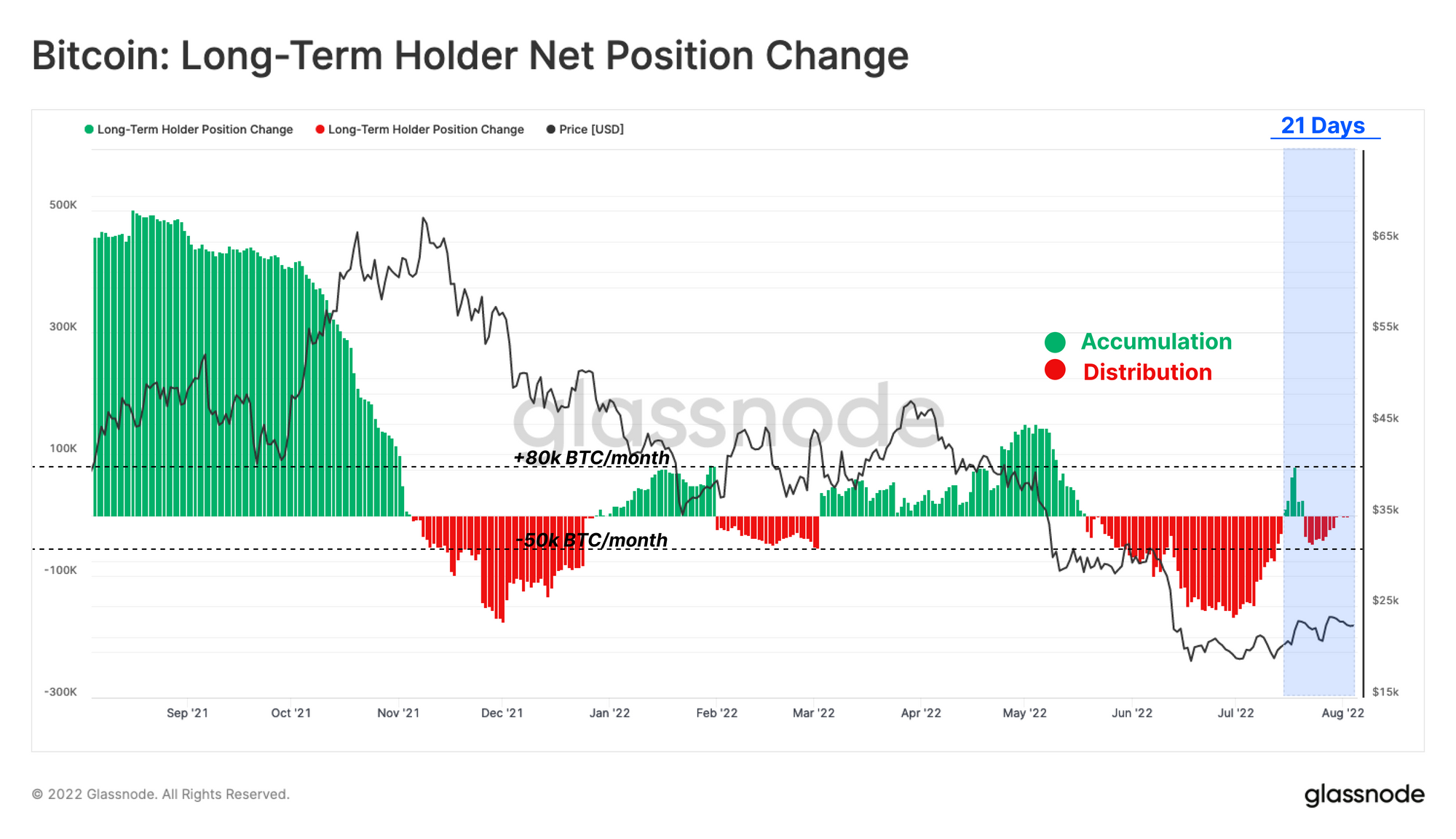
The significance of the mentioned spending from the Long-Term Holders’ side can be underlined by tracing the sudden peaks in the weekly average of Coin Days Destroyed (CDD-7DMA) metric. With CDD-7DMA rising to 13.8M coin-days from its bear market base, it is likely that the recent rally has provided Long-Term Holders with a window to exit some liquidity.
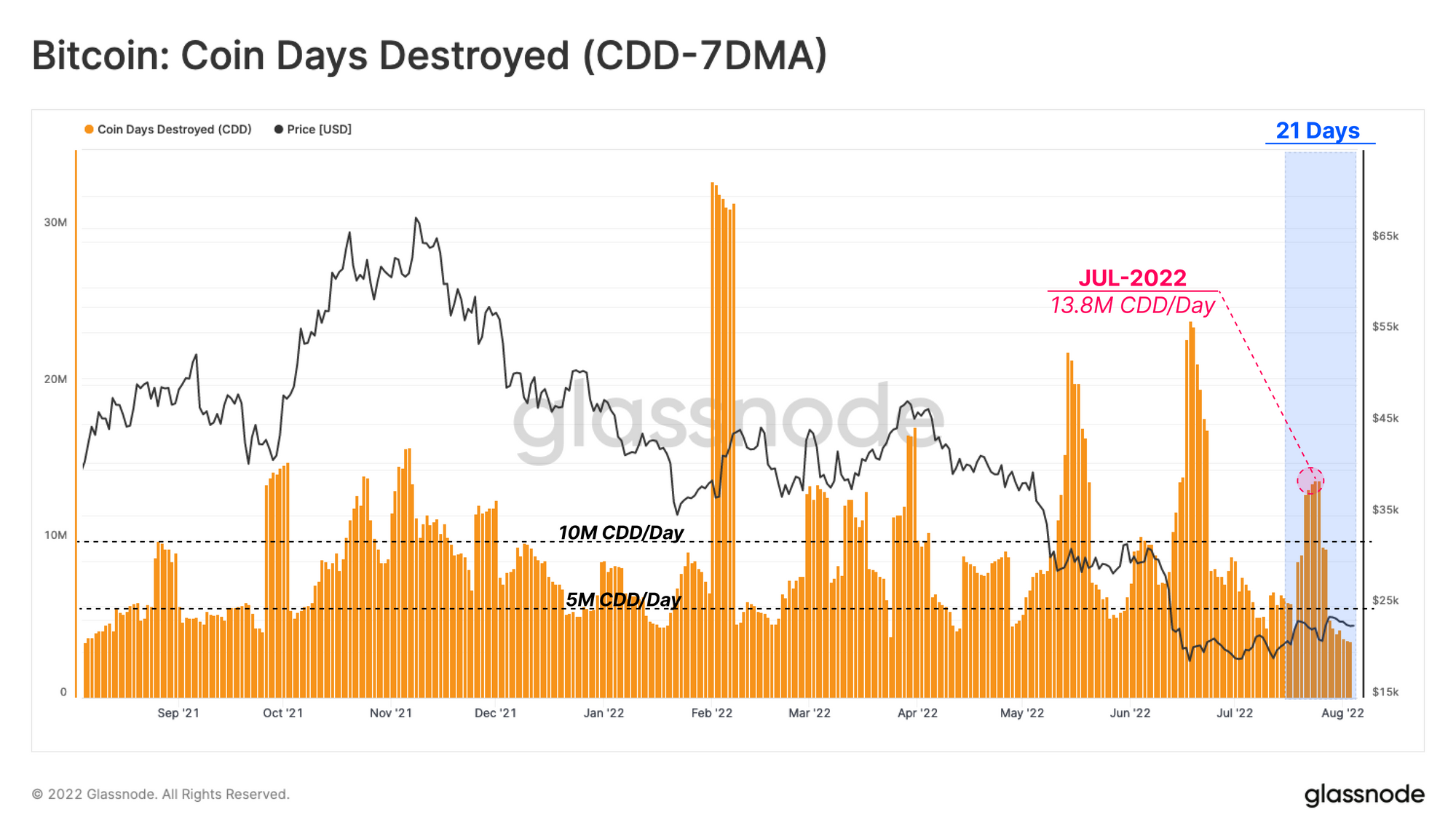
Looking at the market from a macro perspective, investors continue to realize a larger magnitude of losses compared to the profits on spent coins. The latest daily values show Realized Losses at $319M/day and Realized Profits at $226M/day.
Periods, where Realized Losses exceed Profits are a typical part of a bear market structure. However, a reversal of this balance is often associated with a pick-up in demand and could signal market recovery.
However, as it stands, it appears there is still a meaningful degree of expenditure by both the aggregate market and particularly by Long-Term Holders, whom appear to be taking what exit liquidity the market offers them.
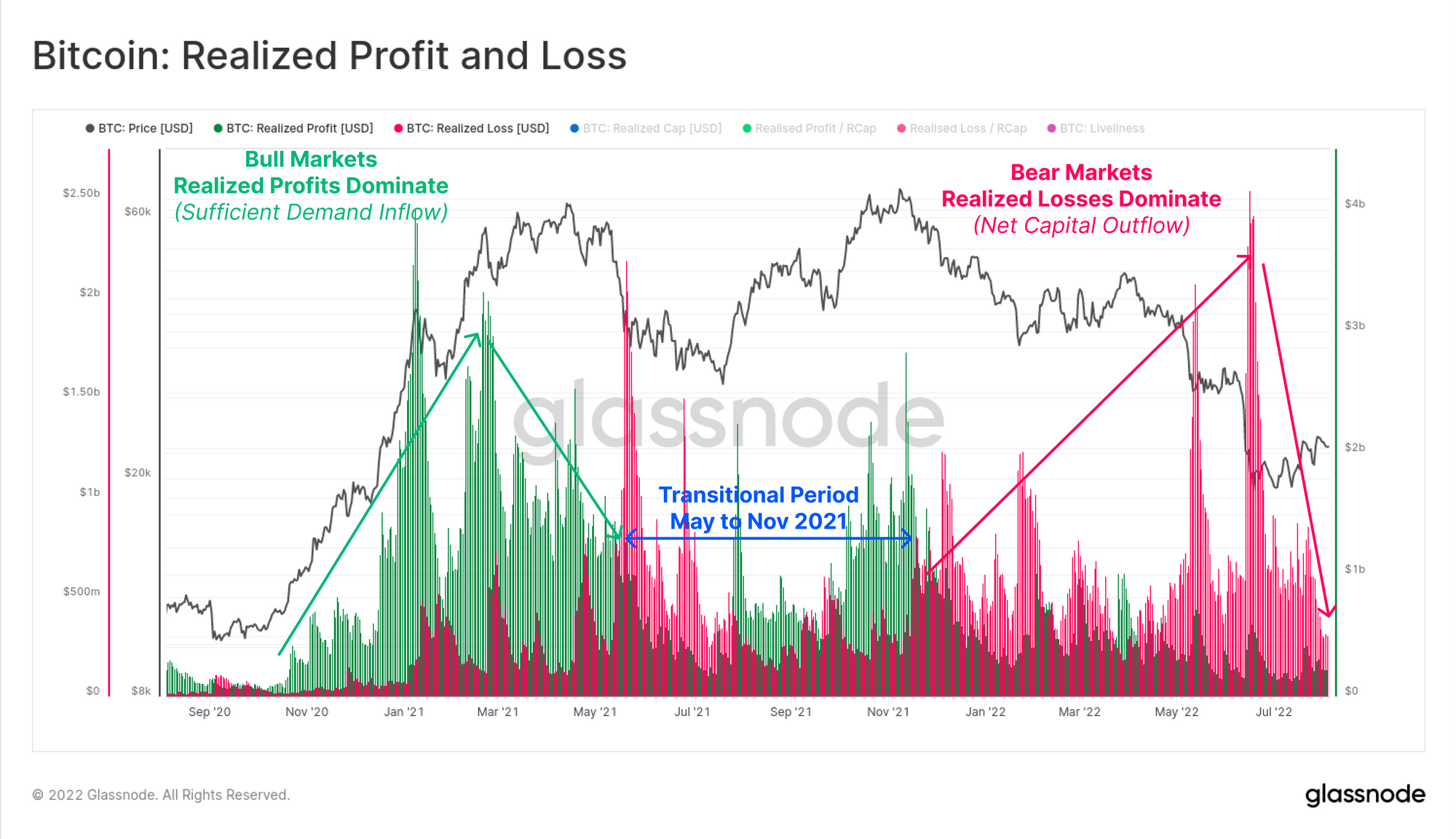
Summary and Conclusions
The implied pressure on Long-Term Holders’ hands has reduced slightly as spot prices trade above their average cost basis (of held coins). However, despite the decreased financial pressure, LTHs continue to spend coins at a net loss, locking in between -11% and -61% on average.
A meaningful proportion of selling pressure appears to still be coming from Long-Term Holders, particularly those who accumulated their coins near the market top in 2021-2022. The recent rally has given allowed Long-Term Holders an opportunity to exit a fraction of their holdings at their cost basis, at prices which essentially 'get their money back'.

- Follow us and reach out on Twitter
- Join our Telegram channel
- Visit Glassnode Forum for long-form discussions and analysis.
- For on-chain metrics and activity graphs, visit Glassnode Studio
- For automated alerts on core on-chain metrics and activity on exchanges, visit our Glassnode Alerts Twitter

